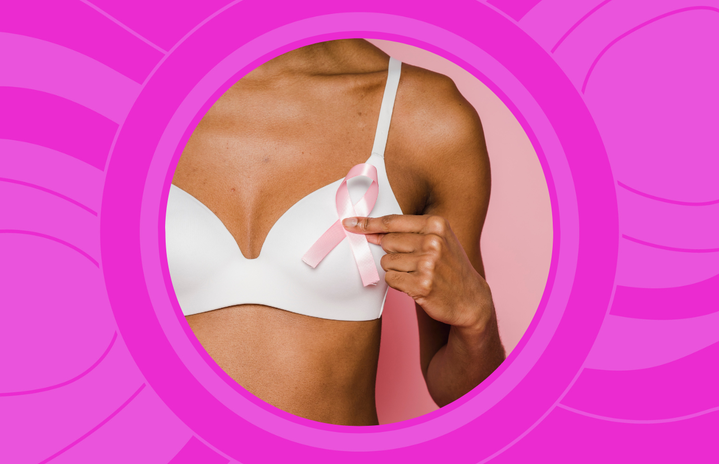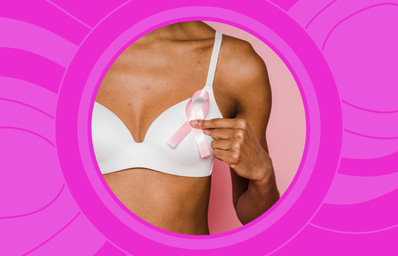October marks Breast Cancer Awareness Month, a disease that has most likely impacted someone you care about. Overall, it affects roughly one in eight women, according to the American Cancer Society. However, once these 31 days come to a close, breast health remains super vital year-round.
While college women are not considered at high risk for breast cancer, it’s not impossible for people in their 20s to develop this. Shockingly, it is the most common cancer found in women ages 15-39, as noted by Yale Medicine. The CDC even shares that 11% of all breast cancers occur in women younger than the age of 45.
Yes — I know, I am hurling boring and grim statistics your way and I might do it again. But hey, this is why you have to check them boobies, queens. After all, healthy boobs are happy boobs… I’m sure a doctor has said that before.
Now, the best ways for young people to stay on top of their breast health include annual doctor check-ups and self-breast exams. Luckily, mammograms–breast X-rays, which have been described as uncomfortable– are not recommended for women younger than 40.
When you go to your physician at home or on campus, a medical professional will perform a clinical exam by checking your breasts and underarm tissue to make sure there are no lumps, discoloration patches, or other concerning factors present.
How Do I Give Myself A Breast Exam?
Outside of the doctor’s office, you are your own best resource for breast health. So, make sure you know your girls well. Really admire your boobs, and practice some self-love. Become familiar with any size changes based on menstruation, understand the right color of your nipples and areolas, and get in touch with how your breast tissue feels, whether it’s naturally dense or not. This will prepare you to notice any changes that may need to be brought to a medical professional.
Performing a breast self-exam is super simple. Each month, take a moment to lie down on your back or take an extra long shower and use your three middle finger pads to examine yourself. Slowly move around the skin of your breasts to check for any lumps, dimples, hard spots, etc. Varying pressures and patterns such as up and down, in circles, and in a wedge formation from the nipple are encouraged to find the best results. Truly take your time, there’s no need to rush a thorough check.
No worries if you’re forgetful when it comes to a monthly check-in. After all, you’re juggling classes and activities and jobs like a champ. Apps such as Know Your Lemons and text reminders from organizations such as CoppaFeel are here to notify you every 3-4 weeks to hold your boobs a little closer.
Sophia Schuler, a registered nurse at the Cleveland Clinic weighed in sharing, “These exams are worthwhile because they familiarize participants with their bodies’ normal characteristics and can alert them to fluctuations warranting clinical examination between routine appointments. The exams are noninvasive and painless–if performed correctly and benign.”
In fact, she makes sure to stay on top of her healthcare in this way. “I choose to perform self-exams between my yearly routine visits with my OBGYN.”
It is worth noting that while early detection will not prevent breast cancer, it will make it much easier to treat if caught quickly. The Cleveland Clinic notes that most abnormalities are not cancer, but it is always worth sharing with your doctor if something looks or feels wrong.
So, take control of your breast health this month and every month. You and “your girls” deserve the very best. Make sure to give them a little extra love once a month.


